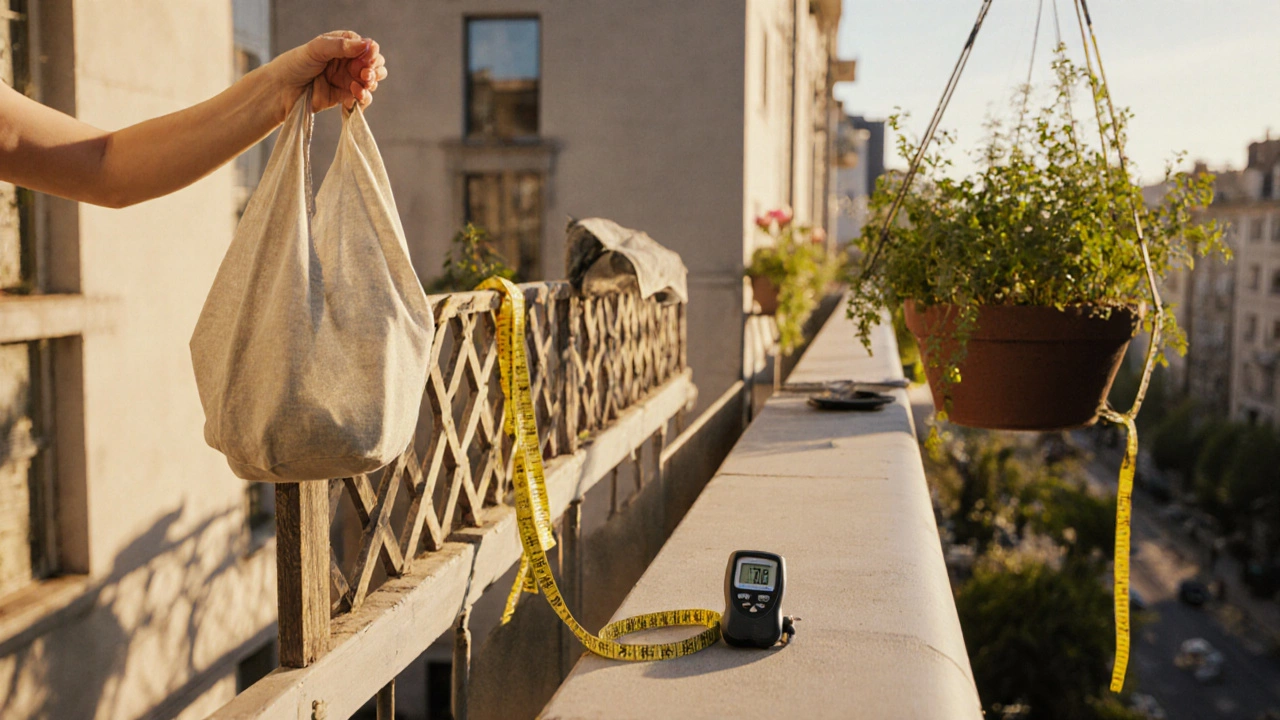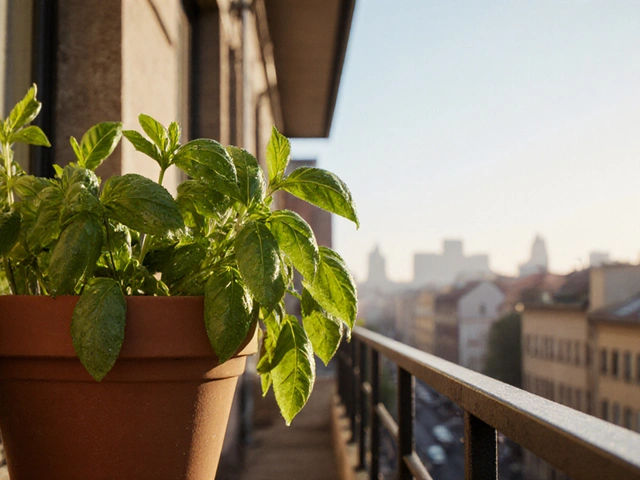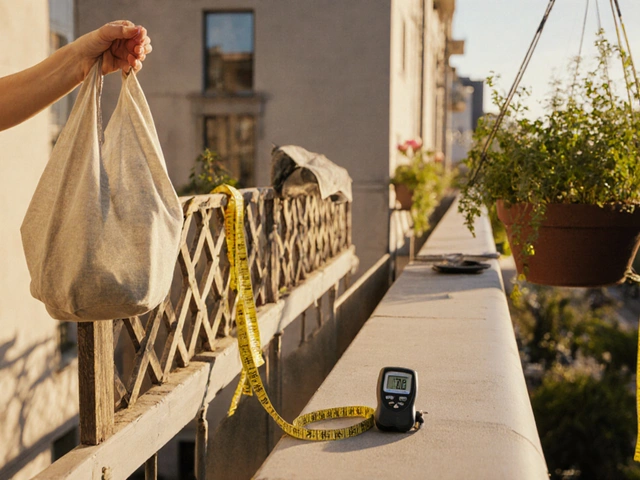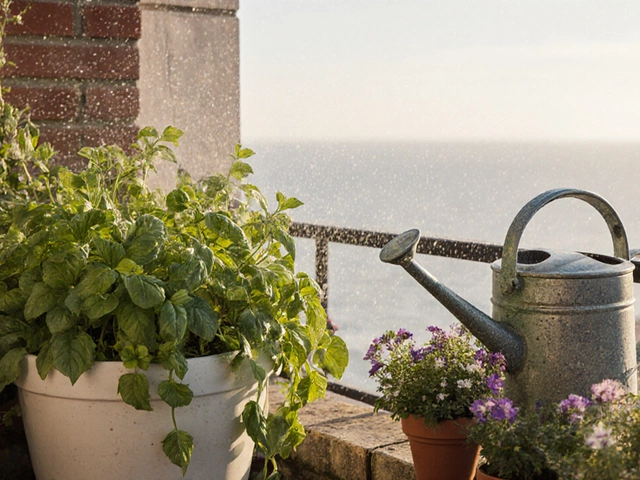Balcony Garden Planner
Recommended Plants for Your Balcony
Quick Takeaways
- Sun‑loving fruits like strawberries, cherry tomatoes and dwarf citrus thrive in sunny balconies.
- Leafy greens such as lettuce, spinach and radishes grow fast and need little depth.
- Use lightweight containers with good drainage and a well‑balanced potting mix.
- Plan for seasonality - start cool‑season crops early and switch to warm‑season varieties in summer.
- Watch water, pest and wind exposure to keep plants healthy.
Living in a compact space doesn’t mean you have to give up fresh produce. In fact, the right fruit and veg can turn a modest balcony in Brighton into a mini‑farm. Below you’ll find the best balcony fruit and veg to grow, plus practical tips that take the guesswork out of container gardening.
Understanding Your Balcony Conditions
Before you pick a plant, assess three basics: sunlight, wind and weight capacity.
Sunlight is the single biggest factor. Most fruiting plants need at least 6hours of direct sun daily. In Brighton, a south‑facing rail usually delivers that, while east or west exposures give 4-5hours.
Balconies can act like wind tunnels. A simple windbreak - a lattice screen or a row of taller pots - reduces drying and protects delicate seedlings.
Finally, check how much weight your floor can support. Lightweight containers (plastic, fabric) keep the load down, while stone pots should be avoided unless you’re sure of the structure.
Top Fruit Choices for a Balcony
Fruits are the crowd‑pleasers of balcony gardening because they offer sweet rewards with relatively little space.
Strawberries are low‑spreading plants that love full sun and produce fruit in late spring and early summer. Choose ever‑bearing varieties like ‘Albion’ and plant them in hanging baskets or shallow troughs (8‑10cm depth). They need a potting mix rich in organic matter and consistent moisture.
Cherry tomatoes are compact, high‑yielding vines perfect for pots. A 30cm pot with a strong cage or stake works well. Feed with a balanced fertilizer every two weeks once flowers appear.
Dwarf citrus such as ‘Meyer’ lemon or ‘Calamondin’ orange, stay under 1m tall and tolerate container life. They need the warmest spot, regular feeding, and protection from frost - a clear plastic cover for a few weeks in late autumn does the trick.
Blueberries require acidic soil (pH4.5‑5.5) and benefit from a large pot (at least 40L) to develop a decent root system. Use a peat‑based mix and add pine needles on top to maintain acidity.
If you have room for a small tree, consider a dwarf fig (e.g., ‘Petite Negra’). It tolerates partial shade and produces sweet fruit after the first winter.
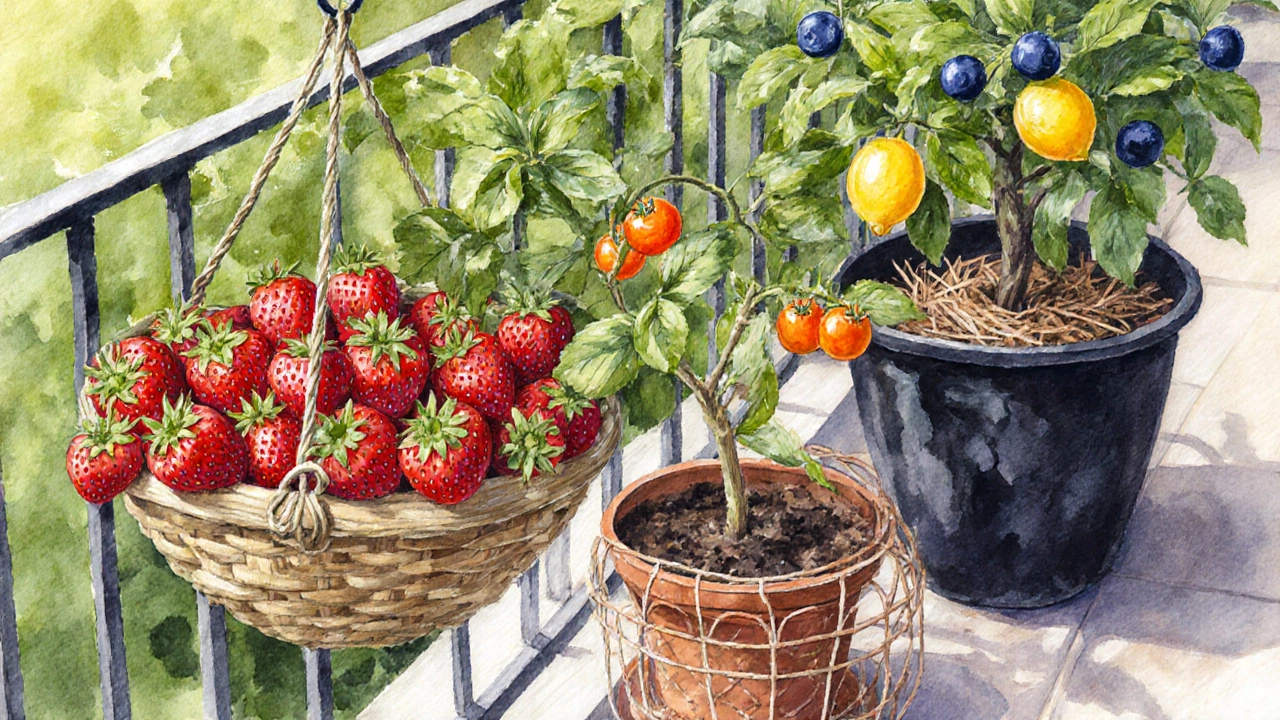
Top Vegetable Choices for a Balcony
Vegetables grow quickly, so you can enjoy multiple harvests in a single season.
Lettuce is a fast‑growing leafy green that thrives in shallow trays (5‑7cm) and cool temperatures. Sow seeds every two weeks for a continuous salad supply.
Spinach likes the same conditions as lettuce but tolerates slightly cooler weather, making it perfect for early spring or autumn. Harvest the outer leaves for a longer crop.
Radishes reach maturity in just 3‑4weeks, so they’re ideal for impatient growers. Plant them in a deep saucer (10cm) and keep soil moist.
For a warm‑season boost, grow peppers (both sweet and chilli). They love heat, so start them indoors in early spring and transplant after the last frost.
Bean varieties such as ‘Bush French’ need only a 30cm pot and produce beans within two months. Provide a small trellis if you choose a climbing type.
Growing Essentials: Soil, Containers, Water & Care
Great produce starts with a good foundation.
- Potting mix: Blend equal parts quality compost, peat or coco coir, and perlite. This mix drains well yet holds enough moisture for fruiting plants.
- Containers: Pick pots with drainage holes. Fabric grow‑bags are lightweight, breathable and perfect for root health.
- Watering: Check soil daily in summer. Water at the base until water runs out of the drainage holes. Mulching with straw reduces evaporation.
- Feeding: Use a water‑soluble fertilizer (N‑P‑K10‑10‑10) every two weeks during active growth, switching to a higher‑potash formula once fruit sets.
- Pest control: Ladybirds, neem oil sprays, and garlic‑pepper rinses keep aphids and whiteflies at bay without chemicals.
Seasonal Planning for Brighton’s Climate
Brighton’s temperate maritime climate means mild winters and cool summers. The trick is to time sowing so plants aren’t shocked by sudden temperature changes.
Early spring (March‑April): Start lettuce, spinach, radishes, and early‑season strawberries. Use a heated mat if a cold snap hits.
Late spring (May‑June): Transfer tomatoes, peppers, and beans to the balcony. Ensure they receive maximum sun.
Summer (July‑August): Harvest ongoing crops, keep watering steady, and provide shade cloth during heatwaves.
Autumn (September‑October): Plant a second round of hardy lettuce and kale. Protect dwarf citrus with a frost blanket at night.
By rotating crops and re‑using containers, you keep the soil fresh and maximize yield year after year.
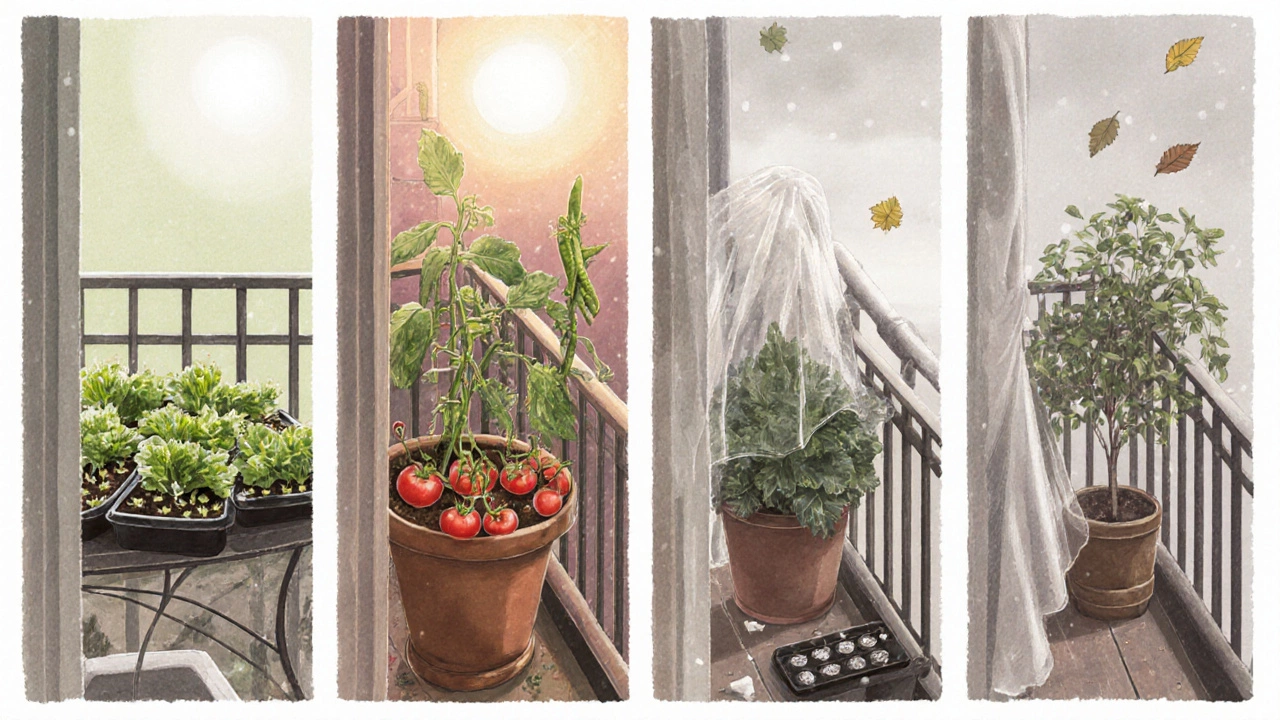
Common Mistakes and How to Avoid Them
- Over‑watering: Soggy soil suffocates roots. Use a moisture meter or stick your finger 2cm deep - if it feels dry, water.
- Under‑feeding: Fruiting plants drain nutrients quickly. Skip fertiliser and you’ll see small, tasteless fruit.
- Choosing the wrong pot size: Small pots limit root expansion, leading to leggy plants. Up‑size when you see roots crowding the drainage holes.
- Ignoring wind: Strong gusts can snap stems or dry out soil. Position taller pots as windbreaks or use a transparent shield.
- Planting at the wrong time: Warm‑season crops in early spring get stunted; cool‑season crops in midsummer bolt.
Mini‑FAQ
Which fruit gives the biggest harvest on a small balcony?
Strawberries, especially ever‑bearing varieties, produce fruit over several months and can fill a hanging basket with dozens of berries.
Can I grow root vegetables like carrots on a balcony?
Yes, if you use deep containers (at least 30cm). Choose short‑root varieties such as ‘Paris Market’ for limited space.
How often should I fertilise balcony tomatoes?
Feed every two weeks with a high‑potash liquid fertilizer once flowers appear, then switch to a tomato‑specific blend for fruit development.
Do I need a special potting mix for blueberries?
Blueberries thrive in acidic mixes. Combine peat moss, pine bark, and perlite, and keep the pH between 4.5 and 5.5.
What’s the easiest herb to grow on a balcony?
Basil loves warmth and sun, needs only a 15‑cm pot, and can be harvested continuously throughout summer.
Comparison Table: Fruit vs. Veg for Balcony Growing
| Plant | Sunlight Needed | Typical Harvest Time | Container Size (L) | Ease of Growing |
|---|---|---|---|---|
| Strawberries | 6‑8 hrs | Late spring‑early summer | 10‑15 | Easy |
| Cherry Tomatoes | d>6‑8 hrs | 6‑8 weeks after planting | 20‑30 | Medium |
| Dwarf Citrus | Full sun | Year‑round (seasonal spikes) | 30‑40 | Medium |
| Lettuce | 4‑6 hrs (partial shade ok) | 30‑45 days | 5‑10 | Easy |
| Spinach | 4‑6 hrs | 35‑50 days | 5‑10 | Easy |
| Radishes | 4‑6 hrs | 3‑4 weeks | 5‑10 | Very Easy |
Pick a mix that matches your balcony’s sun exposure and how much time you can devote to care. With the right varieties, you’ll be pulling fresh berries, crisp lettuce, and juicy tomatoes without stepping out of your flat.
